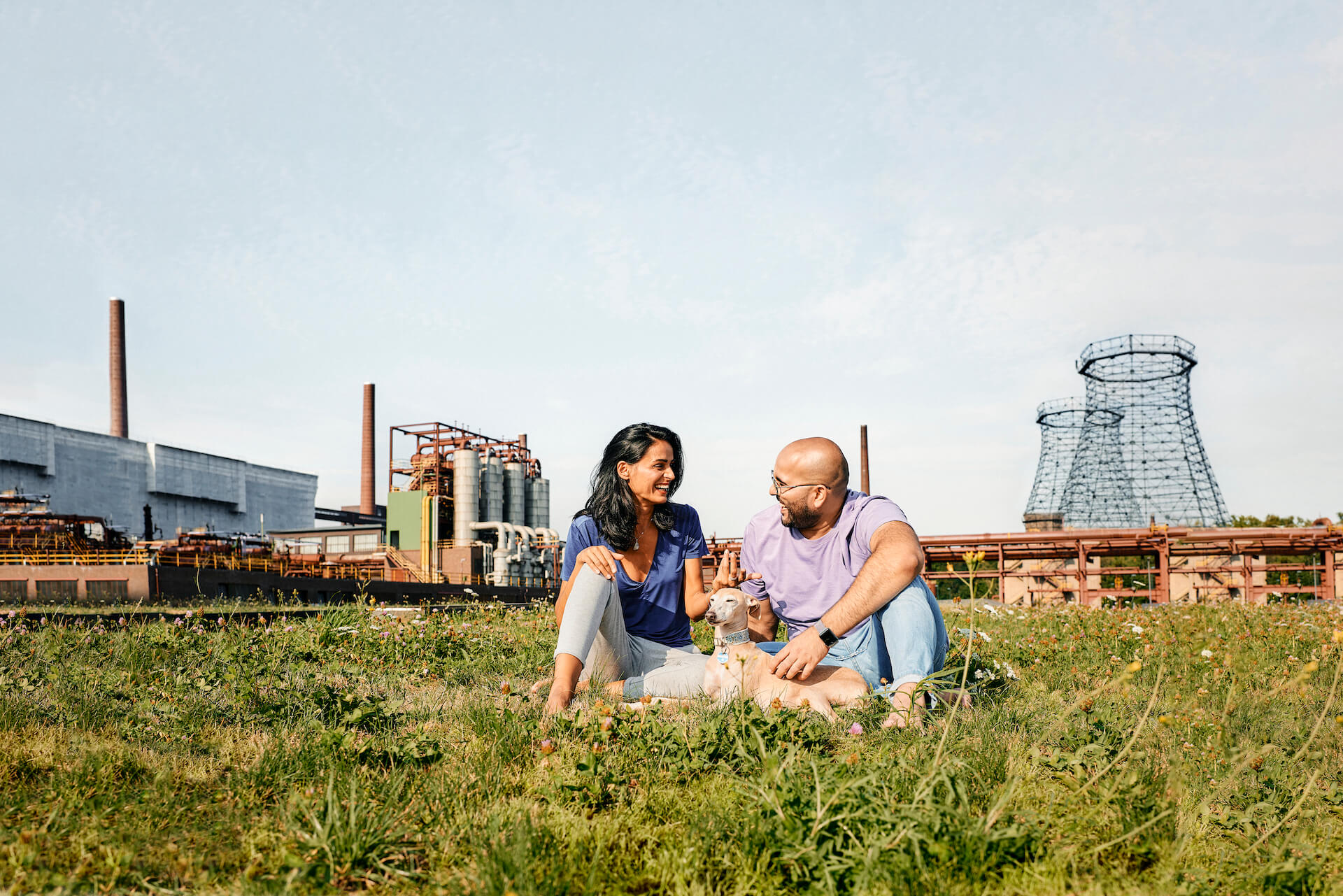
Climate change is a major challenge for the world and the cities in the heart of North Rhine-Westphalia. Droughts, heavy rainfall, extreme heat: we are already experiencing many of the effects of climate change, causing difficulties for both people and nature.
Time to act!
The increase in extreme weather events like heavy rainfall, droughts and tropical nights are increasingly affecting the quality of life of people in Germany.
In the densely populated Ruhr area, we are experiencing the first signs of the climate crisis. According to the German weather service, temperatures here have long been up to ten degrees Celsius higher than in the undeveloped surrounding areas. The consequences: our urban vegetation is withering, water is scarce during long hot spells in the summer or floods the city after heavy storms. Constant daytime temperatures above 30 degrees are particularly dangerous for the very young, the elderly, the sick and the homeless. Moreover, storm damage sometimes destroys more than just roads or overhead power lines.
Our mission: climate change adaptation
Emschergenossenschaft and Lippeverband alongside cities in the Emscher-Lippe region have joined forces in the Zukunftsinitiative Klima.Werk to work together to combat the consequences of climate change in the region. As the region's water management associations, Emschergenossenschaft and Lippeverband are also fulfilling their duty to provide for the common good. In the future, wastewater treatment, flood protection and water conservation can only succeed if we all work together towards climate change adaptation. This is why we are completely rethinking the way we handle (rain) water in our cities, in order to relieve the pressure on the sewerage system during heavy rainfall or increased precipitation, and to ensure the availability and replenishment of groundwater during prolonged extreme heat waves.
The consequences of climate change are being felt immediately in the cities of the Ruhr region. This is why administrations are reacting and adapting urban infrastructures. And they are doing it together. Because climate change does not stop at city borders. In the innovative alliance of the Zukunftsinitiative, cities are learning from each other, supporting each other and tackling projects together. Together with Emschergenossenschaft and the Lippeverband, measures are being implemented to protect our water and green spaces and make cities liveable in the future.
The consequences of climate change in NRW and the Ruhr area
Summer, sun, rising temperatures & extreme heat
The Ruhr area is becoming noticeably warmer. According to LANUV NRW (State Office for Nature, Environment and Consumer Protection), the average annual air temperature in North Rhine-Westphalia between 1991 and 2020 will be 0.8 to 1.5 degrees Celsius higher than in the comparable period from 1971 to 2000. Without further climate protection measures, the temperature will rise by up to 4.4 degrees Celsius by the end of the century.
Despite the implementation of climate protection measures, extreme weather events, warm years and hot summers like the ones we are currently experiencing are becoming the norm.
1,6°C
warmer today in NRW than it was about 100 years ago
4,4°C
increase could occur by the end of the century
+13
more days of summer than between 1951 and 1980
-11
days of frost below 0 °C today
We are already noticing the consequences
In our densely populated urban environments of motorways and industry, it is the large amount of sealed surface in the cities that makes us feel the scale of climate change. Wherever concrete and asphalt cover our streets and residential areas, rainwater cannot seep away. In addition, the dark, hard soil heats up, which leads to so-called urban heat islands. This leads to so-called urban heat islands. By contrast, unsealed surfaces such as meadows, parks or bodies of water store water and cool the environment through evaporation. Furthermore, trees and other forms of vegetation provide shade and fresh air while simultaneously functioning as a refuge for animals.

The more sealed surfaces we have, the more citizens feel the effects of climate change. However, the more blue and green there is in our cities, the better our urban climate will be - and this is what we are working towards with the Klima.Werk.

Andreas GigaHead of the Service Organisation of the Klima.Werk
Rain: both a curse and a blessing
While heavy rainfall events are increasing, the weather is becoming drier and hotter at the same time. In some months, green areas and trees turn brown, streams dry up and water supplies decrease. In other months there are increased heavy rainfall events with flooding. Both extremes are caused by rising temperatures, which increase the amount of water in the atmosphere. The air can hold seven per cent more water for every degree Celsius increase. Large clouds form and fall as heavy downpours. This dilemma constitutes a tough balancing act for water management:
We can no longer prevent many of the consequences of climate change. To protect our urban areas and their inhabitants, we must make them climate-proof. This is the focus of the Klima.Werk: Climate change adaptation for a liveable, blue-green Ruhr area.
Copyright ©
Images: Klima.Werk/EGLV



